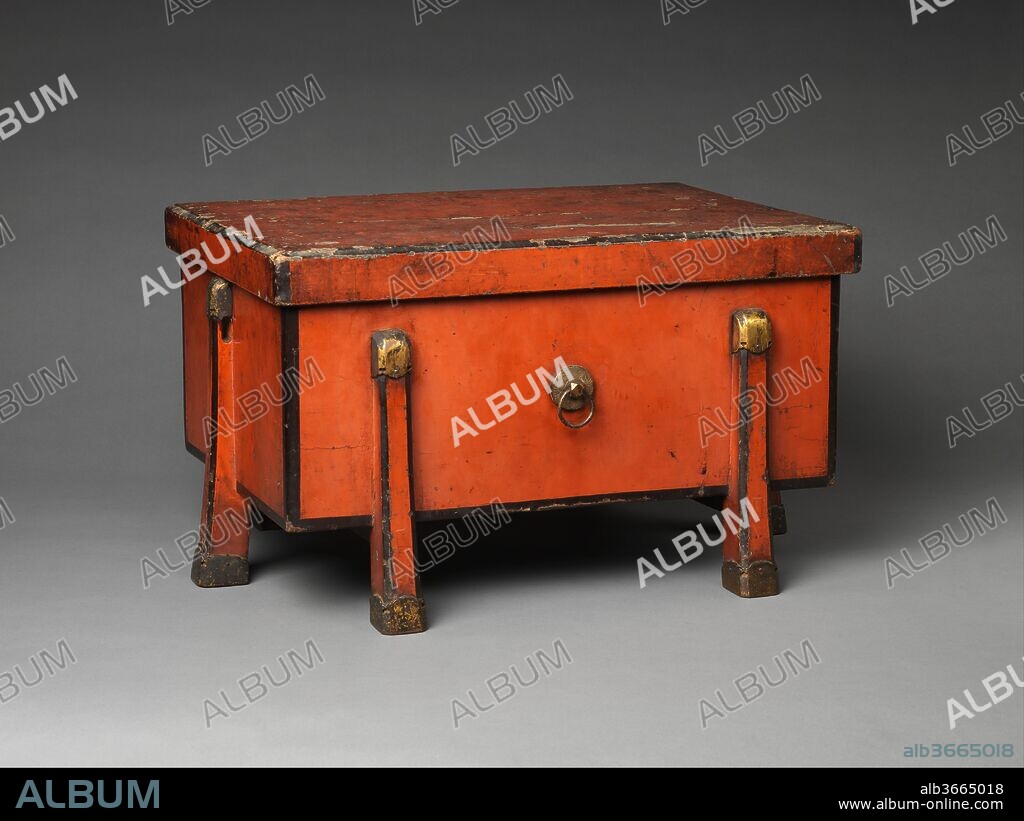alb3665018
Storage Case (Karabitsu)

|
Ajouter à une autre Lightbox |
|
Ajouter à une autre Lightbox |



Avez-vous déjà un compte? S'identifier
Vous n'avez pas de compte ? S'inscrire
Acheter cette image

Titre:
Storage Case (Karabitsu)
Légende:
Voir la traduction automatique
Storage Case (Karabitsu). Culture: Japan. Dimensions: H. 13 in. (33 cm); W. 15 3/4 in. (40 cm); L. 22 1/8 in. (56.2 cm);. Date: 1422.
The karabitsu (literally, Chinese chest) is a rectangular lidded chest raised on four legs. The name implies a foreign origin for this elegant and functional form, used in Japan since the Nara period (645-794) to store precious objects, but no prototype has survived in China. Although its origin is obscure, the form is well suited to Japanese usage, highly functional for storage in a humid climate and attractive for display in the sparely furnished interiors of traditional architecture. Early extant examples from the twelfth century are black with mother-of-pearl inlay, although a similar undecorated red lacquer chest is recorded to have been made in 1040 for the sacred mirror, one of the three imperial regalia. In its earliest form, the box was square with taller legs; the proportions of this later chest, with shorter and wider legs, give it a more solid appearance. Despite the damage to the lacquer on its lid, this richly colored chest is a prime example of Muromachi-period Negoro lacquerwork.
Technique/matériel:
Red over black lacquer on wood with gilt bronze fittings (Negoro ware)
Période:
Muromachi period (1392-1573)
Musée:
Metropolitan Museum of Art, New York, USA
Crédit:
Album / Metropolitan Museum of Art, NY
Autorisations:
Modèle: Non - Propriété: Non
Questions sur les droits?
Questions sur les droits?
Taille de l'image:
4311 x 3234 px | 39.9 MB
Taille d'impression:
36.5 x 27.4 cm | 14.4 x 10.8 in (300 dpi)
Mots clés:
 Pinterest
Pinterest Twitter
Twitter Facebook
Facebook Copier le lien
Copier le lien Email
Email
